When you browse through the troves of AI slop currently masquerading as art, and read headlines about the plagiaristic nature of AI tools, you can see where the friction and fear associated with new technology and art comes from. But is that all digital art can be?
Of course not – and I curated a collection of digital art to prove so. All artworks are available for purchase here.
I focused on the evolution of computer-generated art, from early digital artists who shaped the field in the 1980s, to today’s leading creative coders. It aims to highlight how digital aesthetics, computer algorithms, and artistic intent have transformed over time.
My curatorial pursuit led me to researching the early signs of the interaction between artist and tech.
How it started?
The first computer art emerged in the 1950s and 1960s, with the United States, United Kingdom and Central Europe leading as early pioneers. In the 50s and 60s, digital art was in its infancy, and its development was heavily tied to access to cutting-edge technology, institutional support, and cultural factors.
Ben Laposky – Oscillon 520
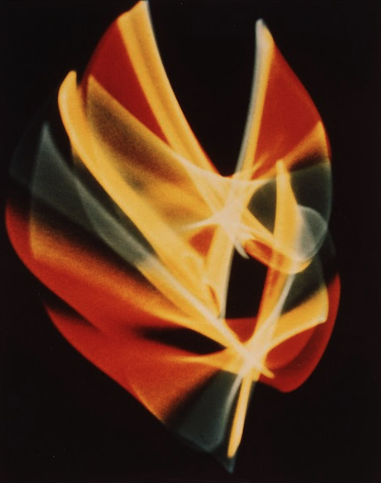
Ben Laposky was an American mathematician and artist, and a pioneer of digital art. In the 1950s, he created some of the earliest computer-generated artworks, called "Oscillons," using an oscilloscope (an electronic device that visualises electrical signals as waveforms on a screen, used for measuring and analysing signal properties like voltage and frequency) to produce abstract electronic patterns.
It would have been cool if he could have recorded the process directly from the screen — but wait, there was no such thing at the time! So instead, he photographed the results. Initially, his images were only in black and white, but soon Ben started finding ways to introduce color into the process.
Desmond Paul Henry
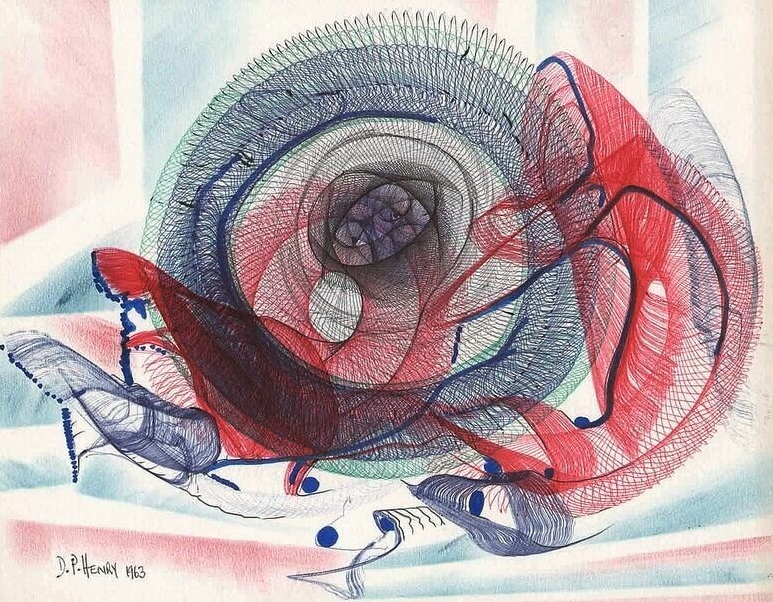
Desmond Paul Henry was a British philosopher and Manchester University lecturer who pioneered computer art in the 1960s. Fascinated by mechanics, he repurposed WWII bombsight computers to create three electromechanical drawing machines, producing abstract, curvilinear patterns. The output of the machines relied mainly on the ‘mechanics of chance’. This meant the drawing machines could not be pre-programmed or store information as in a conventional computer, and they were not precision instruments.
This spontaneous interactive element of his work pre-empted similar interactive features of now generative art.
Michael J. Masucci and Victor Acevedo
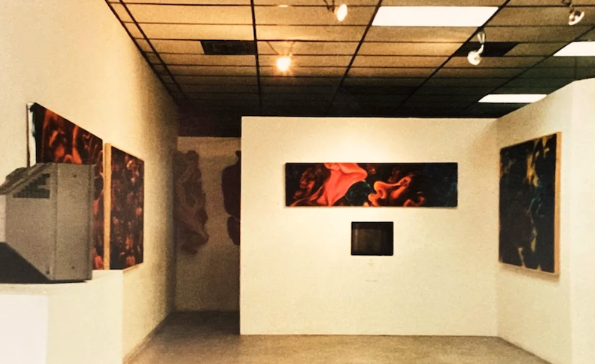
The “From Grid to Grit” collection I curated includes three digital art pioneers who were creating computer art since the 80s. Going through their archives was incredibly fun. Michael showed me a photograph where people were sitting in front of a tiny TV screen observing new media art, which reminded me how far we’ve come. Now it can be more of a struggle to find screens big enough to portray our creations.
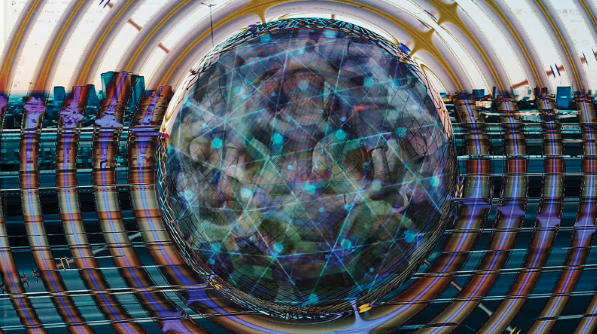
Victor Acevedo is a pioneering digital artist from the US, known for his work in printmaking, computer graphics, and video since 1983. Initially trained in analog media, he transitioned to digital art, creating hybrid imagery blending geometric abstraction with figuration, inspired by M.C. Escher, Salvador Dalí, and R. Buckminster Fuller.
For “From Grid to Grit” I selected his Abstract Spheroid work created in 2024 using AI, which was sold during presale.
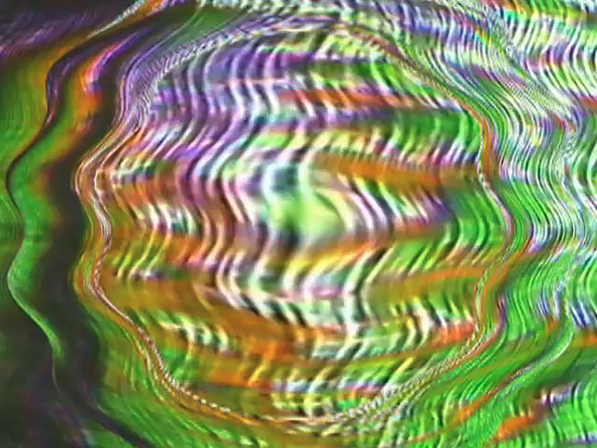
Michael J. Masucci is an American award-winning media producer, video artist, writer, musician, curator, and educator, recognised for his pioneering work in digital and video art since the 1980s. As a founding member of EZTV, a seminal Los Angeles-based video art group, and co-creator of CyberSpace Gallery, one of the first galleries dedicated to digital art, his work has been exhibited internationally at venues like the Museum of Modern Art (New York), the Institute of Contemporary Art (London), and the American Film Institute.
For “From Grid to Grit” I selected his “Standing Waves #1”, made in 1982. This work is a hybrid electronic generative animation, a “performance painting”, created with a custom-built technology based on original code in an 8-bit Atari 800 computer. It was configured with a separate Atari Video Synthesizer, processed through a Panasonic Special Effects Switcher and several Plubicon tube cameras.
Available for purchase here.
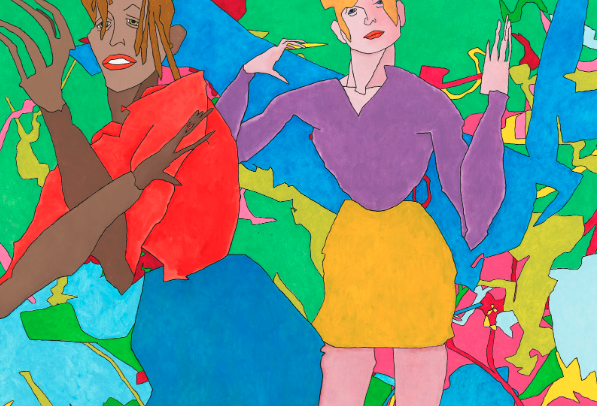
Harold Cohen was a British-born artist and pioneer in computer art, best known for creating AARON, one of the first software programs designed to autonomously generate original artworks. Unlike random or pre-programmed outputs, AARON used rule-based systems to make decisions about composition, form, and colour, which enabled it to create representational imagery like plants, figures, and interiors. Cohen crafted custom plotters and painting devices to draw lines on paper and apply colour with robotic pens and brushes, guided by computer-driven commands. The name nods to the biblical Aaron, who was chosen by God as Moses' spokesperson.
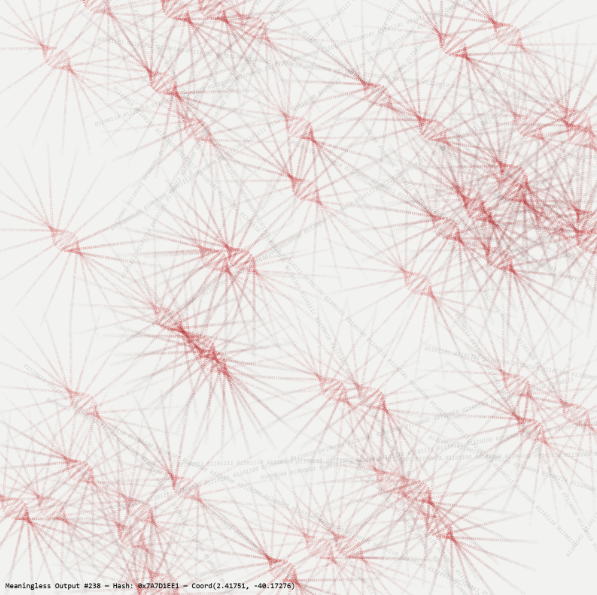
Now, computer art can be coded, generated with AI, painted on an iPad – you name it. The pioneers of digital art paved a path which has become infinitely splitting and winding, full of new and evolving crafts and techniques and ideas.
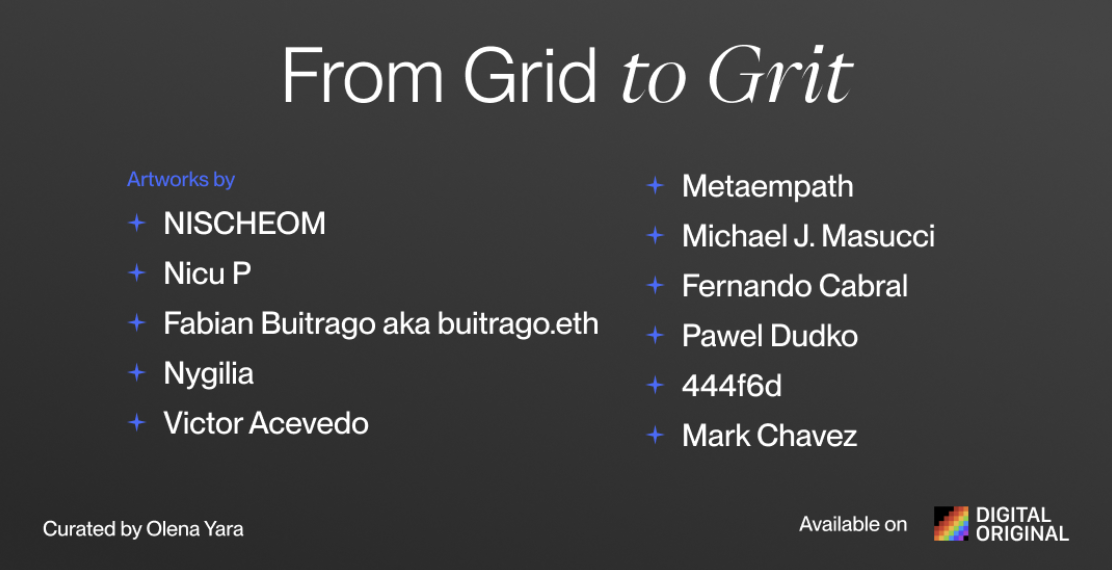
Fernando Cabral builds immersive visual textures using millions of circles and pure JavaScript, while Fabián Buitrago translates generative systems into physical paintings rooted in structure and simplicity. Nicu Popescu blends generative visuals with projection based installations, and Nygilia offers a vivid digital meditation on transformation and identity.
Pawel Dudko’s uses code to create infinite animations, generative sculptures, and spatial experiences.
Metaempath creates work that appears to exist in a space between states - where liquid yearns to crystallize and where metal remembers its molten origins – where form is frozen at the threshold of metamorphosis.
446f6d challenges the very foundations of generative aesthetics with a system trained on nothing at all. Thank you, 446f6d, that is a beautiful homage to the key debate on AI art, no plagiarism, no memory of anything ever created.
All of the mentioned artworks are curated by me, Olena Yara, and are available for purchase on Digital Original right now: https://nft.theyaragency.com/
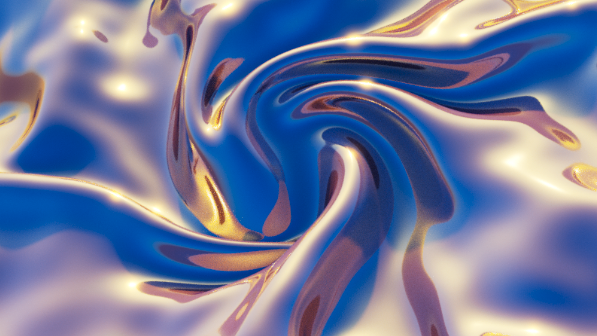
So, every time your feed becomes drowned with AI slop, maybe don’t blame the technology. Within the boundless creativity of computer art, you'll find works that resonate deeply with your tastes, values, and unique aesthetic visions. You just need a great artist.